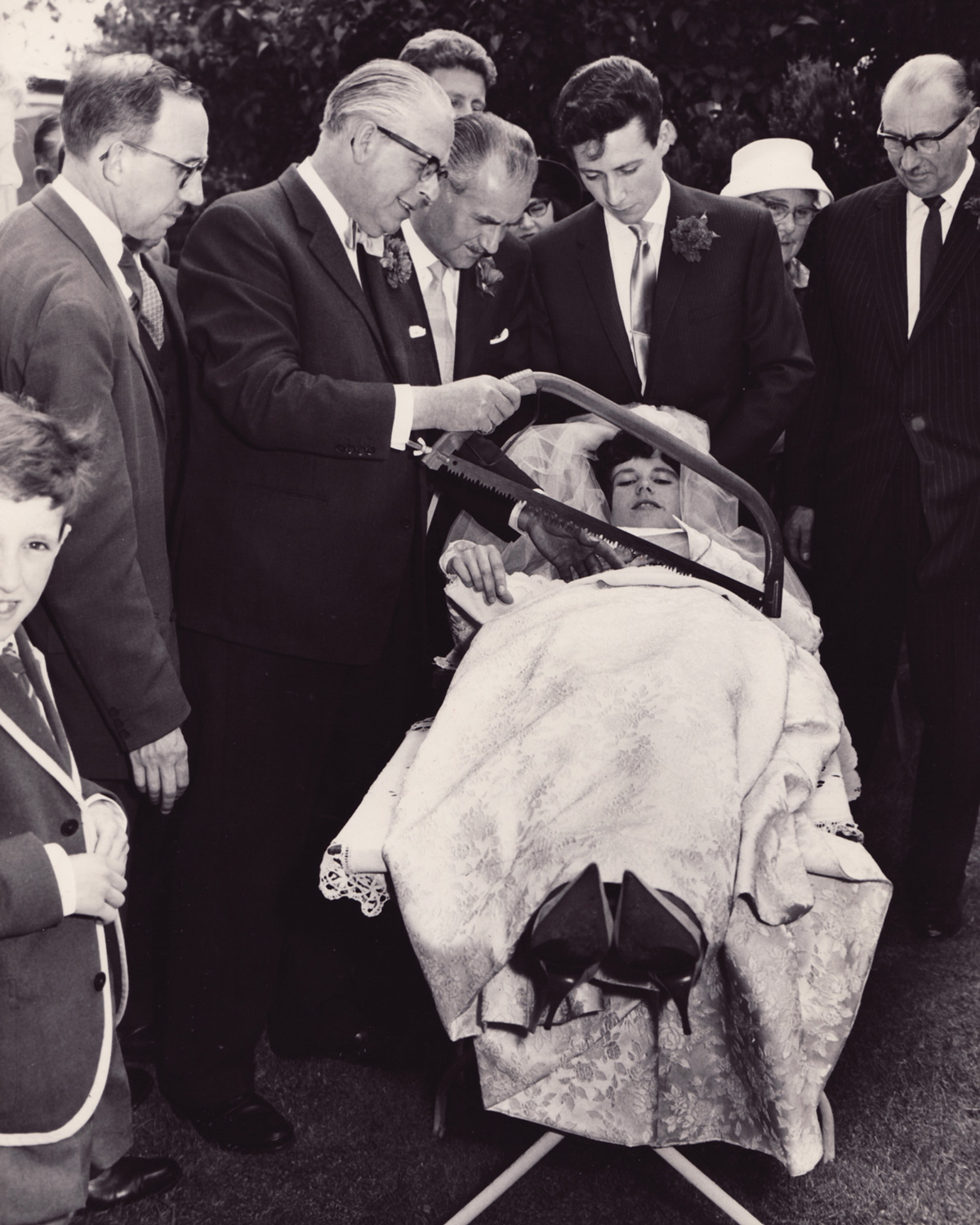Alive at Both Ends
A brief history of magic’s most famous illusion
Paul Kieve

Known for his mischievous sense of humor, Francis White was president of The Magic Circle in London from 1958 until his death thirty-one years later. Magicians historically possess an eager eye for publicity, but what drove an otherwise dignified man to balance his daughter on what at first appears to be an ironing board and hover a tree saw over her belly on her wedding day is anyone’s guess. Perhaps The Magic Circle had a particularly convincing press officer at the time, or, more likely, White and his daughter realized that this was a unique opportunity to capture a comical, unlikely image. If White had attempted to complete the act in such a way, it would most certainly have been “for the last time” (as the press caption notes) because he appears to be attempting to do so without any kind of special apparatus.
“Sawing Through a Woman” caused a sensation when its inventor, P. T. Selbit (born Percy Tibbles), first presented it at the Finsbury Park Empire, London, in January 1921. Selbit enclosed his assistant in a plain, coffin-like wooden box. After a preliminary effect of passing glass sheets through the container (and seemingly his assistant), a full size crosscut saw was employed to rip through the center of the crate. When the splintered box was re-opened, the assistant was seen to be in one piece—the saw having also apparently passed through the center of her body without harm. The box was far too small for the assistant to have avoided the saw; and in any case ropes had been tied to her wrists and ankles, threaded through holes in the sides of the box, and held firmly in place by audience volunteers throughout the demonstration. It was a sophisticated piece of stage magic, which Selbit promoted with a variety of inventive and sometimes opportunistic publicity stunts. An invitation to subject suffragettes Christabel and Sylvia Pankhurst to the ordeal was not accepted.
It was magician Horace Goldin, however, who, inspired by Selbit’s sensational act later the same year, created the version which was to enter public consciousness: “A Woman Sawn in Half.” This involved the sawing and complete separation of a long box with the head and feet of an assistant visible at either end. Goldin originally presented the illusion using a male assistant, but only when an attractive female became the victim did it surpass the success of Selbit’s invention. To magicians, however, this version seemed less sophisticated because of the large size of the box and the suspicious depth of the tabletop on which it rested. But the additional payoff—separating and subsequently restoring the two halves of the partially visible lady—proved more satisfying to an audience, perhaps because the illusion centered on a visible miraculous restoration rather than just the suggested solid-through-solid penetration effect that Selbit had offered. When the divided lady was seen to be “alive at both ends,” as the publicity announced, Goldin was truly presenting before the audience’s eyes a “living miracle” (a title he adopted for a later, more gruesome incarnation of the effect). By 1963, the illusion and all its successive incarnations had became so iconic that all Francis White needed to do was to grab any old garden saw and (in this case, far from) any old lady in order for the public to understand what he and his daughter were suggesting.
Paul Kieve has designed magic for West End and Broadway theater, the Harry Potter movies, and collaborated with many contemporary visual artists, including Christian Jankowski and Orlan. His first book, Hocus Pocus, will be published by Bloomsbury in October 2007. See www.stageillusion.com.